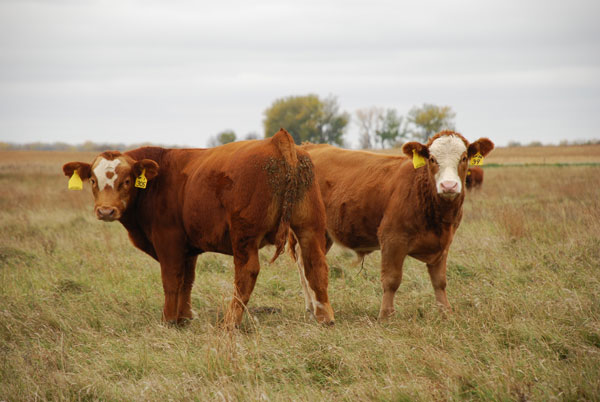Calf and feeder prices bounce higher
Firmness in wholesale beef values helped support futures and cash prices for calves and feeder cattle.
September 9, 2017

Cash calf and feeder cattle prices continued to show resilience this week, helped along by rallying futures prices.
Feeder steers and heifers traded mostly steady to $5 per cwt higher during the holiday-shortened week, according to the Agricultural Marketing Service (AMS). There were instances of $6-$8 higher later in the week as futures prices gained steam.
Feeder Cattle futures closed an average of $4.59 higher week to week on Friday. Increasing chatter that wholesale beef values might have finally carved out a seasonal bottom provided some support.
Choice boxed beef cutout value was 53¢ higher week to week on Friday afternoon at $191.88 per cwt. Select was 68¢ lower at $189.97.
“Packers were not able to turn prices around, but they were able to hold them steady compared to last week,” explains Andrew P. Griffith, agricultural economist at the University of Tennessee, in his weekly market comments.
“All primal cuts trended upward, with the exception of the rib primal, which was slightly lower,” AMS analysts say. “Large supplies of 50% beef trimmings continue to be traded on the spot, pushing prices lower.”
Between firmer wholesale beef values and climbing futures prices, cattle feeders were passing on fed cattle bids through Friday afternoon. Although too few to trend, there were a few live trades in Nebraska at $105 per cwt on Friday—steady money with the previous week.
Live Cattle futures closed an average of $2.78 higher week to week on Friday.
“Packers could have increased concern because it is usually the fourth quarter before cattle prices (fed) begin to come off the seasonal low,” Griffith says. “If prices turned this week, then that could put them paying higher prices much earlier than expected. Alternatively, packers cannot be sure of the availability of cattle moving forward, which may force their hand and result in higher bids.”
On the other hand, cattle numbers continue to grow as do carcass weights on a seasonal basis.
“Strong packer margins and Saturday kills show no problems as of yet, but what plays out over the months of September and October will be important for fed and feeder cattle prices well into next year,” says Stephen Koontz, agricultural economist at Colorado State University, in the most recent issue of In the Cattle Markets. “Packer margins were solid (last month) and cattle feeding margins remain in the black. This bodes well for maintaining fed cattle marketings at current prices and current feeder cattle prices…Weekly fed slaughter and monthly fed cattle marketing will need to be watched closely.”
Possible Calf Price Support
Although Griffith says producers should ready themselves for softer calf prices heading through fall, there are some supportive factors that could mute the decline.
Besides Midwestern farmer-feeders filling yards as a corn marketing alternative, lousy wheat prices and bountiful prospects for wheat pasture could add support.
In Oklahoma for example, Derrell Peel, Extension livestock marketing specialist at Oklahoma State University, explains most of the state received about double the average precipitation in August, along with below-normal temperatures, enabling earlier wheat sowing.
“Early planted wheat, along with other forages may add 30 or more days to the front end of winter grazing,” Peel says, in his latest weekly market comments. “At the same time, expectations for 2018 wheat prices are dismal enough that some producers are beginning fall grazing with an intent or high likelihood of grazing out wheat next spring. A full graze-out adds another 75 or so days to the winter dual-purpose grazing period. Together, these conditions suggest the possibility of 220 or more days of grazing compared to a more typical 120-day winter grazing period.”
Such a lengthy grazing opportunity also means some stocker operators will be looking for two turns on wheat rather than one.
“Two sets of stockers allow producers to consider a wider range of purchase weights and perhaps avoid demand bunched around lightweight stockers,” Peel explains. “It is common in the fall to see prices for typical stocker sizes (400-525 pounds) to be high relative to heavier stockers (550-650 pounds). Current prices for stocker cattle suggest that a wide range of purchase weights (400-650 pounds) all offer roughly the same value of gain and similar potential for returns.”
About the Author(s)
You May Also Like



.png?width=300&auto=webp&quality=80&disable=upscale)

